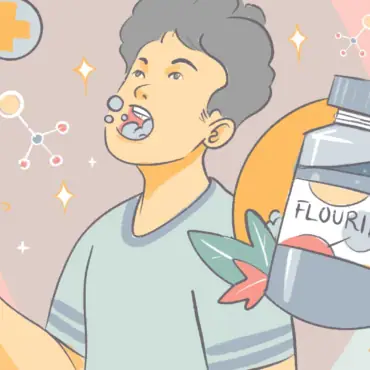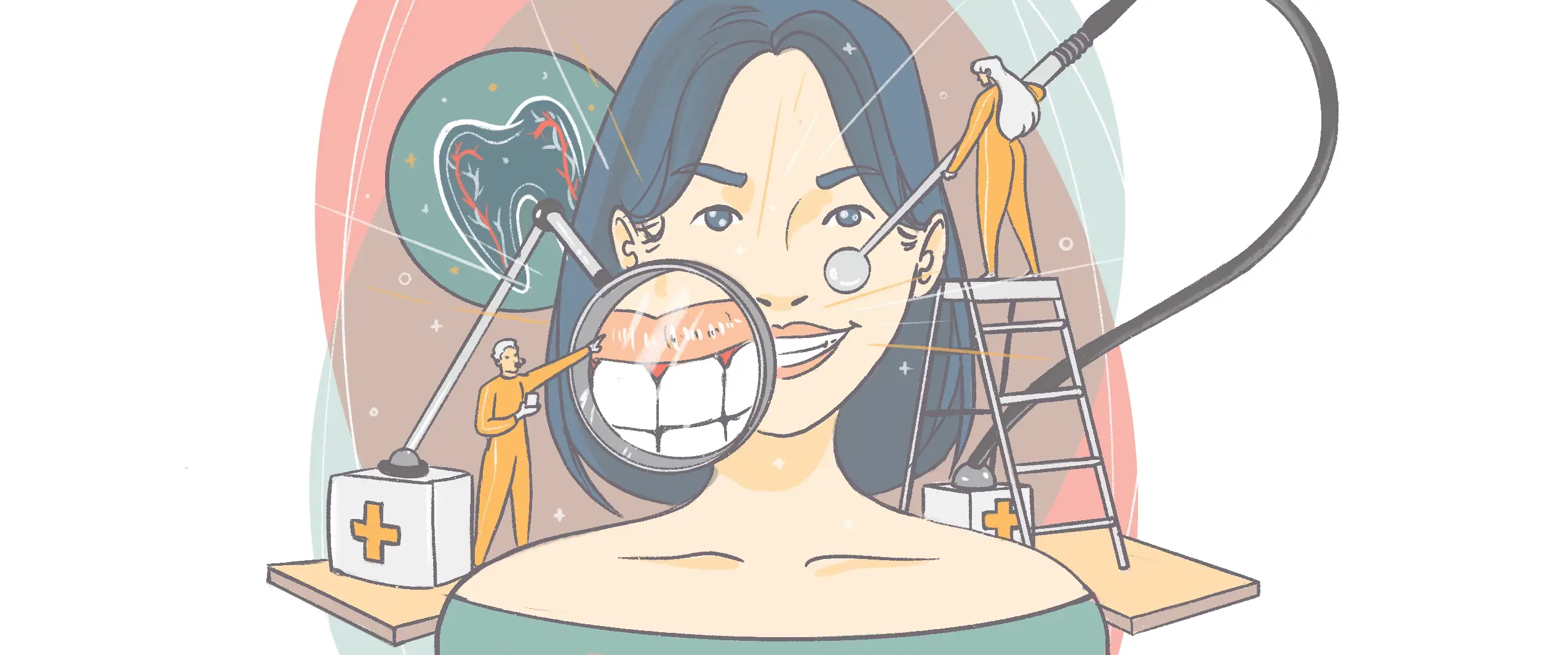Want to know what teeth cleaning looks like? Lots of us feel anxious before going for a dental cleaning procedure, and that’s fair. If you haven’t been to a dentist in years, you may not remember or even know how the process feels and what to expect.
Figuring out the ins and outs of dental cleaning can calm your anxiety and inspire you to book a dentist appointment more often. Let’s explore what regular checkups like these are all about.
What is a dental cleaning?
Professional dental cleaning is a preventative treatment for oral disease. Patients need to do it regularly to remove tartar from spots that are tricky to reach at home. These areas are hard to work even with habitual flossing and brushing. The dental hygienist is usually the one who is responsible for the procedure, performing scaling, cleaning, and debridement (or plaque removal).
Due for a checkup?
Find a top rated dentist near you that takes your insurance.
Ideally, you’ll need routine professional teeth cleaning every six months. If you have some dental issues, your dentist might recommend you do it more often. What’s important is that you find a dentist in your local area and don’t skip the routine checkups. Seriously, going to the dentist is one of the most important things you can do for yourself and your health. It’s critical to keep this up.
What happens during teeth cleaning?
For most people, the noise, prodding, and discomfort is the main reason they don’t want to go to the dentist. But, getting a regular checkup should be on the top of your list. With consistent teeth cleaning, you will eliminate the tartar and plaque buildup. You will also help maintain an odorless oral environment and help avoid periodontal disease.
Step 1: Teeth and gum examination
Every cleaning procedure begins with an oral examination. With the help of a small mirror, the hygienist will examine the state of your gums and teeth. They’ll look for obvious signs of gum disease, tooth decay, and gingivitis (gum inflammation). If there are no serious problems, the hygienist will start the cleaning process.
Note: If you use partial dentures, it’s still important to get regular checkups. You’re still susceptible to cavities and it’s critical to maintain ideal oral health.
Step 2: Scraping plaque and tartar buildup
The hygienist will use a scaler to remove all the tartar and plaque that’s affecting the gum line. They’ll also remove any leftover tartar that’s stuck between each tooth. It’s normal for the hygienist to keep scraping a particular area, especially if that spot has a lot of tartar.
Step 3: Deep cleaning
After they remove the plaque and tartar, it’s time for deep cleaning. The hygienist will use a high-powered electric brush to get rid of the remaining tartar. This is a great option for any areas the scaler may have missed.
Step 4: Expert flossing session
With a flossing session, the hygienist will work with the most stubborn tooth areas. This procedure helps identify any probable trouble spots that could bleed after flossing. It’s a practical cleaning process that will thoroughly clean the teeth.
Step 5: Mouth rinse
At the end of the cleaning, it’s time for a mouth rinse. The water will remove the leftover debris and provide a clean working surface. You’ll then spit the water out.
Step 6: Teeth protectant
Finally, it’s time to finish the teeth cleaning procedure. The hygienist may apply a fluoride treatment to help your teeth fight cavities the next couple of months. (You may even get to choose the flavor.) If so, your hygienist will use a sticky paste or a foamy gel to create a mouthpiece. This piece will fit over your teeth and stay there for a minute.
And it’s not uncommon for dentists to use fluoride varnish. The fluoride hardens the moment it comes in contact with saliva. As a result, you may not be able to drink or eat right after cleaning.
How long does a cleaning take?
A dental cleaning can last anywhere between half an hour to an hour, depending on the current state of your gums and teeth. For example, if there are elevated levels of inflammation or tartar present, you may need 45 minutes. But in a fairly healthy patient with minimal tartar buildup, it can take less than 30 minutes.
Patients who haven’t had scaling done in a long time may need an additional 10 to 20 minutes. When paired with gum disease or other teeth problems, the dental cleaning procedure could last longer. Look for a dentist near you the moment you notice bleeding gums, soreness, or enamel damage.
Does dental cleaning hurt?
Your cleaning procedure shouldn’t hurt. But if there is some level of gum inflammation, oral disease, root exposure, or tooth decay, it may boost tooth sensitivity. Therefore, some patients may experience discomfort or minor pain during the cleaning procedure. If you’re worried about the discomfort, the dentist can apply a topical anesthetic on the gums to numb the area.
Final thoughts
Everyone needs to do routine teeth cleaning once in a while — ideally, twice a year. The good thing is, there is nothing to worry about. This procedure is relatively comfortable and usually fast. And, most importantly, it will help keep your teeth in tip-top shape and will help to prevent cavities.
Due for a checkup?
Find a top rated dentist near you that takes your insurance.
Whether your teeth hurt or not, you shouldn’t skip the cleaning process. The more often you go, the healthier your teeth are going to be. Now that you know what to expect, you may even look forward to your next appointment at the dentist’s office.








